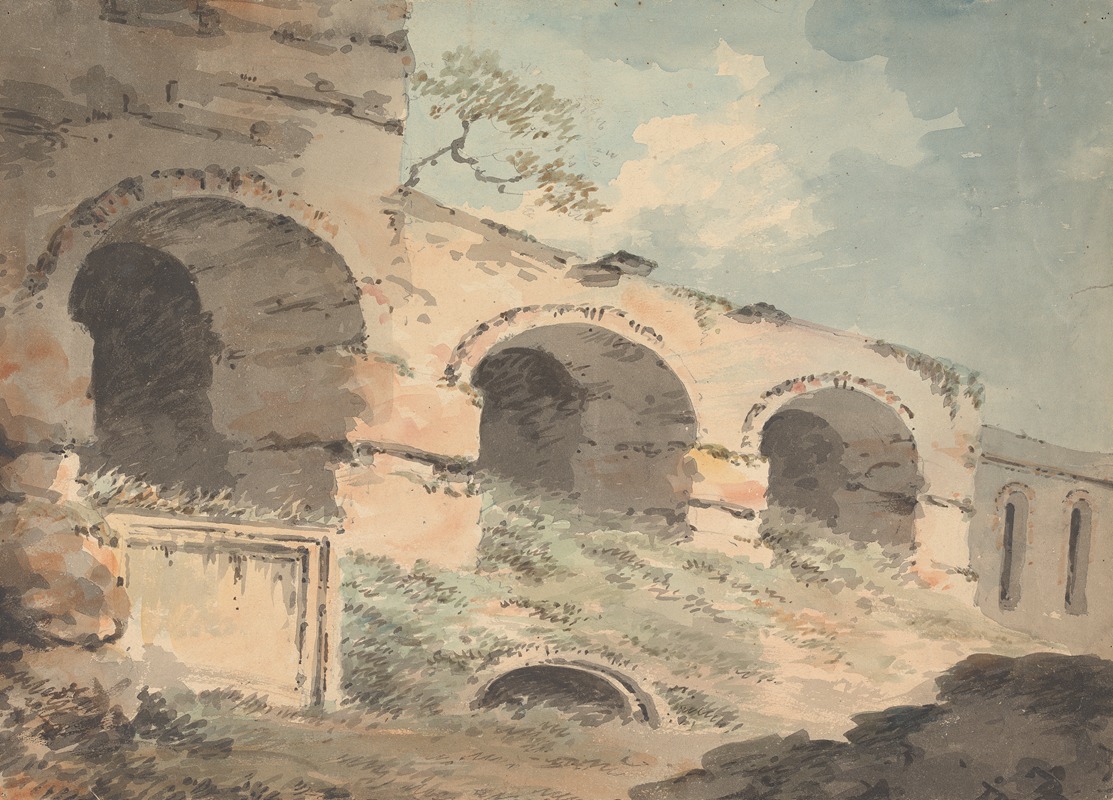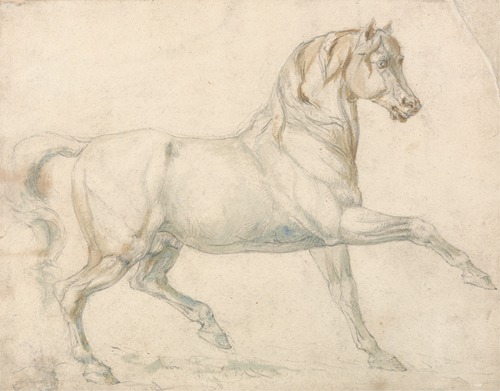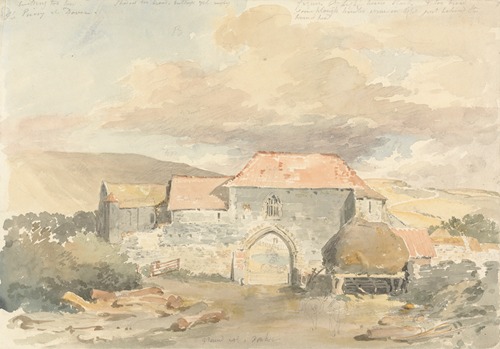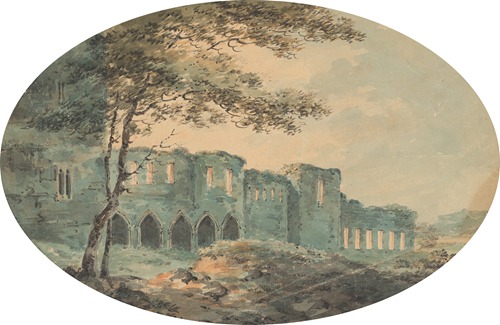
William Sawrey Gilpin was an English artist and drawing master, and in later life a landscape designer.
Gilpin was born at Scaleby Castle, Cumbria on 4 October 1762, the son of the animal painter Sawrey Gilpin. He attended the school of his uncle, William Gilpin (originator of the Picturesque), at Cheam in Surrey. He married Elizabeth Paddock; they had two (or possibly three) sons, one of whom seems to have remained dependent on his father. He died at Sedbury Hall, North Yorkshire, the house of his cousin the Reverend John Gilpin, and is buried nearby in the churchyard at Gilling West.
In the 1780s, Gilpin taught himself the relatively new aquatint process of printmaking, to produce plates to illustrate his uncle's books on picturesque scenery. Gilpin specialised in watercolours; and in 1804 was elected first President of the Society of Painters in Water-Colours. He was patronised by Sir George Beaumont, through whom he met the picturesque theorist Uvedale Price.
In 1806, Gilpin took a post as drawing master at the Royal Military College, Great Marlow (which moved to Sandhurst in 1812), teaching cadets to make accurate records of the landscape and the lie of enemy positions. This apparently secure employment came to a sudden end in 1820, when he was made redundant in a round of post-Napoleonic war cutbacks, at the age of nearly sixty.
To support his family, Gilpin turned to a career as a landscape gardener, for which he had little qualification or experience beyond an artist's eye. He was helped and encouraged in this by Uvedale Price, whose theories on picturesque landscaping clearly accorded well with his own ideas. Gilpin's work also shows the influence of the later work of Price's old adversary Humphry Repton, who had died in 1818.
Gilpin seems to have been remarkably successful. In his short landscape design career he reputedly worked at "some hundreds" of sites. Relatively few designs survive on paper or unaltered on the ground. Features employed by Gilpin included amoeba-shaped flower beds, gently curving paths through irregular shrubberies, and raised terrace walks.





